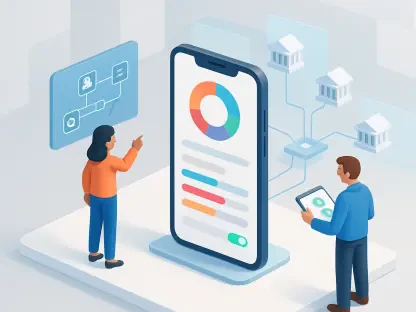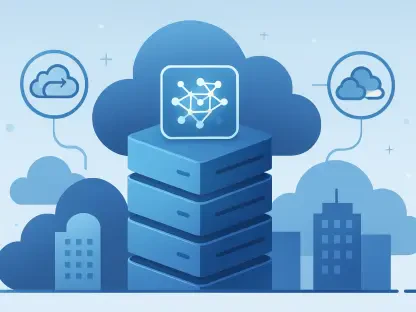The banking system of America is still among the stable foundations of the global market; however, many individuals started to doubt this stability at the beginning of 2023, as the regional failures constituted 209 billion USD. Fortunately, this highly regulated industry is primarily covered by the Federal Deposit Insurance Corporation (FDIC). And, by the end of last year, all the leading performers had reached normal operation levels.
Some of the players in this market are JPMorgan Chase, Bank of America, Wells Fargo, and Citigroup. The total number of FDIC-insured institutions has risen to 4,470 at the end of December 2023 from 4,136 during the prior year.
Performing transactions with the help of the Internet is popular these days, and more and more participants are entering the market, thus forcing traditional lenders to be more proactive. For instance, let me focus on JPMorgan Chase. In 2013, they had 5,662 thousand mobile banking subscribers. This figure rose to 53.8 million by the end of 2023, exclusively from the topographical distribution of the subject.
So, as the financial world evolves with new tech, it’s crucial to beef up the rules and organizations to keep growth steady and competitive. We’ve got to make sure everyone’s playing by the same rules, or else we could be in for a wild ride. Read on to learn all about this growing trend, its drawbacks, implications, and why we cannot leave analog in the dust just yet.
The Impact of Technological Innovation on Transaction Costs
Digital services have, therefore, brought down the cost of monetary transactions in operation besides improving customer care. Here are three key advantages of ICT in the sector:
Increased Inclusion: Thanks to the Internet, more people are using financial services to improve their lives by applying for loans based on their activity in the app. This allows for a detailed analysis of their preferences through a mobile banking application.
Lower Information Costs: The services are easier and cheaper to use than traditional methods. This makes it simpler for providers to adopt and reduces the need for manual work. Customers receive better quality services that are delivered more quickly, improving business efficiency.
Creation of Information Goods: These online spaces have brought about significant changes. The low cost of providing services such as online shopping and consultation has led to the development of new and beneficial financial products and services suitable for a wide range of customers.
Bonus: Elevating Customer Experience in Retail Banking
For the year 2024, there was concern with online services as a strategic venture since increased competitiveness and fluctuations of markets reflected less customer loyalty. Here it is in numbers:
It seems that almost 23% of consumers worldwide want to switch their providers every year. This often affects traditional companies, especially in the GCC countries, where many people have multiple accounts.
According to the GCC Retail Banking Radar by Kearney, while 41% of the executives understand increasing demands for these, they force such institutions to embrace new solutions and methodologies for better data management on customer relations.
By using platforms and AI, customers could enjoy personalized services, while the rules in the GCC keep things secure and build trust. But to really succeed in this tech-driven world, lenders need to move beyond just transactions and focus on the long-term value of their customers.
Capturing the Digital Dividend
Digital tech has a lot to offer, but many banks aren’t fully cashing in. The struggle is in shifting from just being efficient to actually building real connections with customers. Right now, many lenders create a pretty basic and emotionally flat experience. Most interactions happen online and are often just about simple processes like checking balances or paying bills.
To turn this around, financial institutions need to embrace new ways to communicate and have more meaningful chats with their customers. Conversational and generative AI can help make these interactions feel more personal. Just imagine calling customer service—you could have a constructive discussion about the issue that is bothering you, instead of listening to a generic recorded message. This change could really boost customer loyalty and satisfaction.
Bridging the Digital Divide
Nevertheless, a significant gap remains, even as technology continues to be integrated at a rapid pace. Today, approximately one-third of the world’s population, which is about 3 billion people, cannot access the internet or have poor connections. Some of them face limitations in infrastructure, others experience economic disparities, or it is a matter of geographic isolation.
Bridging this gap is essential to maximizing the benefits of modern technologies in this sector. Below is a guide on why governments and institutions should invest in infrastructure, education, and policies that promote universal internet access and digital literacy.
The Digital Revolution Needs a Strong Analog Foundation
Closing the remaining divide is crucial to fully capitalize on the opportunities that the Internet and related technologies offer. But that alone won’t cut it. Nations also need to strengthen important traditional supports: rules that help companies connect and compete, abilities that technology improves rather than replaces, and organizations that are both capable and accountable.
Policy priorities change as countries advance through the transformation:
Countries with low internet access should shift their focus to creating conditions for greater adoption. The first step is to remove barriers like their lack of basic ICT infrastructure, and overly strict regulations. Not to mention, they also have high tariffs on digital products, which can be more than 25% in some areas. They should compensate for low internet access with education systems that prioritize literacy and numeracy, support teachers with resources, and facilitate adult learning.
For countries transitioning to a digital economy with a relatively high understanding of technology, the task is to ensure that opportunities are open to all. These states need to focus on teaching advanced cognitive and socioemotional skills—preparing for careers rather than specific jobs—since less than half of today’s schoolchildren can expect to work in an occupation that exists today. Administration can introduce or strengthen e-government tools such as IDs, financial management systems, and e-services for citizens and businesses. Last but not least, changing provider incentives and increasing transparency is another practical goal to have.
For countries already comfortable in an online economy, the main challenge is addressing issues related to internet cost and use. We should prevent platforms from abusing their power and ensure fair competition between online and traditional services. Education and training should focus on teaching advanced ICT skills and promoting lifelong learning, especially in aging societies. Technology can also help government entities collaborate better and increase citizen engagement in policymaking.
Overall, development strategies must go beyond just tech initiatives. “Connectivity for all” is essential, but to fully benefit, nations need an environment that supports digital growth. Without a modern and solid foundation, the impact of investments will remain limited—like trying to build a house on sand. In contrast, countries that establish robust foundations can expect significant returns, such as faster growth, more job opportunities, and improved services.
Conclusion
Forging a future with more open, effective, and selective services requires embracing tech advancements and fortifying the existing analog base. However, this journey isn’t just about having the right tools—it also requires a shift in mindset that values genuine conversations and real connections with customers. But whether banks can become more human and less profit-oriented, remains to be seen. And will artificial intelligence be the ironic catalyst to drive this change in the new era of the digital economy? Only time will tell, but we will be the first to inform you.









